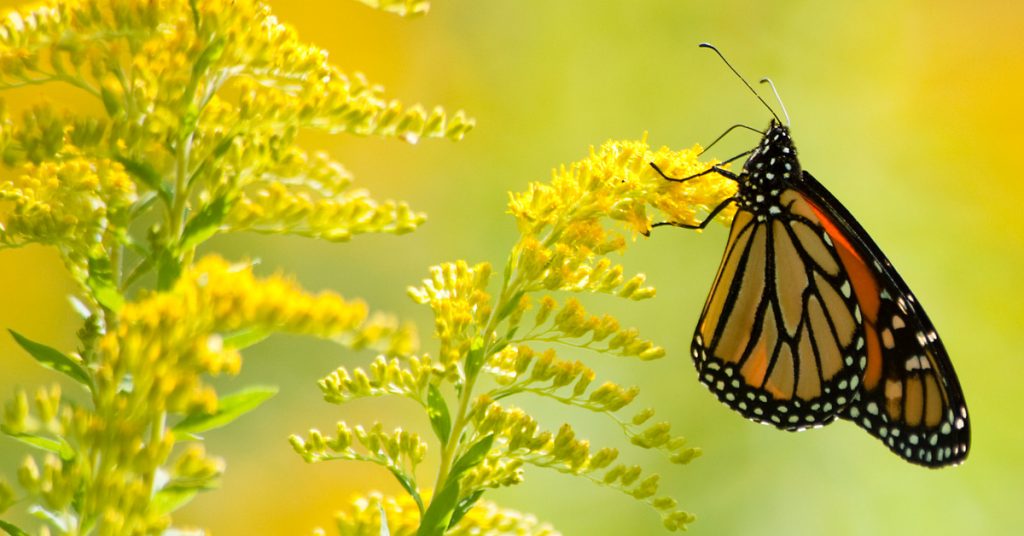When summer begins to fade, for many, seasonal allergies are just getting started. What’s really to blame? This time of year, fields of gold can be seen all over Minnesota and throughout the metro. Goldenrod, with its showy flowers, is in full bloom in August and September.
Allergy sufferers, between their sneezes and eye rubbing, frequently cast blame on the goldenrod for their suffering.
But that blame is misplaced. Goldenrod, contrary to popular belief, is NOT the culprit of most allergies this time of year. In order for pollen allergies to be activated, pollen must be windblown. However, as indicated by the bees and butterflies, goldenrod attracts these pollinators to disseminate their pollen grains – and does not rely on wind.

Not far away, however, you will likely find the culprit for your late summer allergies—ragweed. It blooms at the exact same time as goldenrod, but with its smaller green blooms, it doesn’t draw nearly the same amount of attention.
Ragweed is one of the most common allergens in the United States. With 17 species, ragweed impacts as many as 23 million Americans. Ragweed plants release tiny grains of pollen to fertilize other ragweed plants. In fact, scientists believe one single plant can release up to a billion grains of pollen into the air. And they travel far. Pollen has been detected as far as 400 miles out to sea and up to two miles up in the atmosphere.
What are the symptoms of ragweed allergies?
Symptoms of a ragweed allergy sometimes referred to as hay fever, include:
- Sneezing
- Swollen, itchy, or irritated eyes
- Scratchy throat
- Runny nose
- Nasal congestion
- Coughing or wheezing
- Sinus pressure or pain
- Sleep disruption
How is a ragweed allergy diagnosed?
Oakdale ENT physicians can diagnose a wide range of allergies including ragweed. First, we’ll talk to you about your health history and symptoms, and conduct a physical exam assessing eyes, nose, ears, sinuses, throat, chest, lungs, and skin. Next, we’ll conduct an allergy test to determine what substance, or allergen, may trigger an allergic response.
How is ragweed treated?
Alleviating symptoms can include a number of lifestyle changes ranging from avoiding the peak pollen hours of 10 a.m. – 3 p.m., using an air conditioner for extended periods of time, vacuuming often with a vacuum cleaner that has a high-efficiency particulate air HEPA filter.
Over-the-counter medications including antihistamines (Claritin or Benadryl), decongestants (Sudafed or Afrin nasal spray), or nasal corticosteroids (Flonase or Nasonex) may provide short-term relief. If this is not providing sufficient relief, our physicians can prescribe a montelukast (Singular) to alleviate symptoms.
For long-term relief, many patients find allergy shots, or sublingual (under-the-tongue) allergy treatments, to be very effective. Both treatments are a form of immunotherapy that involves introducing an allergen to the body and to increase levels of that allergen gradually over time. This treatment alters your body’s response to the allergen, helping reduce the severity of allergic reactions over time. Many patients find complete relief within 1-3 years of beginning the treatment.
If you’re ready to find relief from your ragweed allergy, schedule an appointment today.
